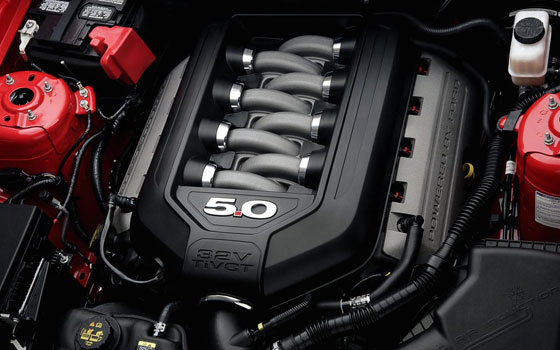For 2011, Ford has ditched their 4.6-liter & 5.4-liter engines and have gone back to the 5.0-liter engines made infamous in the late 80’s to early 90’s fox bodies. (An ugly, but fast car.)
This modern 5.0-liter four-valve Twin Independent Variable Camshaft Timing (Ti-VCT) V-8 engine in the new Mustang GT will deliver 412 horsepower and 390 ft.-lb. of torque to the pavement.
Code named “Coyote” – the engineers developing this engine drew their inspiration from a V-8 Coyote Indy racing engine and began developing the new-old engine with the objective of delivering a 400+ horsepower power-plant, without sacrificing reliability, durability and fuel economy.
Aside from all the technical stuff about the cylinder heads, new camshaft lift profiles and other details, “How does this affect us at oilpan.com?”
Unlike the Chevy going with the die-cast aluminum oil pans with oil runners and all that jazz, Ford kept true to their style and stuck with the traditional steel oil pans. At first glance the new 5.0-liter oil pan looks exactly like its 4.6/5.4-Liter predecessor; but up-close it’s an entirely different story.
The oil pan looks like it received injections of HGC (human growth hormone) and other performance enhancement drugs, because like Barry Bond’s head, it’s gotten bigger since the early 90s. But why wouldn’t it? It has to accommodate a newly designed aluminum block developed with its own windage-tray, increased main bearing bulkhead widths, and main bearing caps with larger bolts to keep all the spinning doohickeys together.
So Ford’s solution for this new fancy-pants Ti-VCT V-8 monster is stamping a deeper oil pan with increased capacity and an included baffle for sustained heavy-footed driving.
How do we improve on that? I don’t know just yet… but we will.

